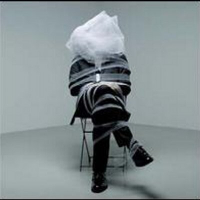Change of cranks from 175 to 172.5 - any major diffference?

Yossie
Posts: 2,600
Evening all
Just a quick one:
Everything else on the bike remaining the same, would there be any major difference if someone changed their 175 mm cranks to 172.5 mm?
Maybe at the most lower the seat post by a couple of mil' to compensate?
Many thanks
Y
Just a quick one:
Everything else on the bike remaining the same, would there be any major difference if someone changed their 175 mm cranks to 172.5 mm?
Maybe at the most lower the seat post by a couple of mil' to compensate?
Many thanks
Y
0
Comments
-
You would raise your seatpost as your foot at the lowest point would be higher with a shorter crank arm.0
-
You won't notice it at all0
-
You will spin maybe 1 rotation more per minute, nothing spectacular. Shorter crank arms are designed for smaller people with shorter legs!0
-
1/. You should raise your seat post by 2.5mm. (simple physics)
2/. You'll notice your knee is now 2.5mm lower at max height (joke!)
3/. You have sacrificed some leverage for ability to reach higher revs - you might notice this, you might not. A pro rider would almost certainly notice. I have bikes at 170mm and 172.5mm and find it impossible to tell the difference just by 'feel'.
Note - if you were prone to knee strain/injury, then shorter cranks = good.
Also, for most fixed gear applications, you want to think shorter (avoiding pedal strike on turns - plus helping legs achieve higher revs, for greater range of speeds)0 -
smashing - thankyou very much indeed for the answers.
kr
Y0 -
I have a geared bike with 172.5mm cranks and a single speed with 175mm cranks and notice absolutely no difference at all.
Theoretically I should have a (very slighlty) lower cadence with 175mm, but with it being a single speed, my cadence (in places) is far, far higher, in other places far, far lower on on the flat pretty much exactly the same...
Neil0 -
Just out of interest on a sciency side - why would the cadence be lower with longer cranks? Is it just because it takes more time / it's more distance for you to push round? Would this not be outweighed by the advantage gained of having more leverage i.e. the further you are from a pivot the less force needed?
I know with a small amount like this the difference is minimal but I'm wondering about the general theory of it0 -
Ollieda wrote:Just out of interest on a sciency side - why would the cadence be lower with longer cranks? Is it just because it takes more time / it's more distance for you to push round? Would this not be outweighed by the advantage gained of having more leverage i.e. the further you are from a pivot the less force needed?
I know with a small amount like this the difference is minimal but I'm wondering about the general theory of it
You've hit the nail directly on the head, and answered your question in a way.
The leverage has no effect on cadence, as the longer cranks produce more leverage which only equates to more torque being put out. Since the crank arms on 172.5 are that little bit shorter, they spin a bit faster as the revolution is not so long as with a 175 crank.0 -
Think of all that extra weight the 2.5mm extra length adds though and it will be flex more under pressure
 0
0 -
MountainMonster wrote:Ollieda wrote:Just out of interest on a sciency side - why would the cadence be lower with longer cranks? Is it just because it takes more time / it's more distance for you to push round? Would this not be outweighed by the advantage gained of having more leverage i.e. the further you are from a pivot the less force needed?
I know with a small amount like this the difference is minimal but I'm wondering about the general theory of it
You've hit the nail directly on the head, and answered your question in a way.
The leverage has no effect on cadence, as the longer cranks produce more leverage which only equates to more torque being put out. Since the crank arms on 172.5 are that little bit shorter, they spin a bit faster as the revolution is not so long as with a 175 crank.
Ok, but my thoughts on the leverage was that if there is increased leverage then it's easier to turn the cranks and reach a higher cadence? So less effort to move the long ones but longer distance to travel, where as more effort to move the short ones but less distance to travel. Equal eachother out?0 -
-
Nope, your thinking too much into differences based off of power output. Given the same rider on both cranks, and putting the same effort in, the longer cranks will spin 1-2 rotations less per minute, as the distance traveled will be a tiny bit longer.
Think of racing in an oval track. Will the outside of the track be the fastest way around, or will the inside? Of course the inside, as that shortens the distance needed to travel. Same goes for any corner, the apex is on the inside of the turn, and you are almost always faster going through in the inside of the corner rather than hugging the outside.0 -
Another very good 'method' I use to analyse things which have any sort of scientific or physical basis is that of 'extreme'.
We want to know what, if any difference might exist between 172.5 and 175 cranks. Sod all is probably the most pragmatic answer. However, there will be a difference, even if we can't easily notice. The easiest way to think through the science is to take it to extreme - this can often point to the answer.
Think 125mm cranks and 200mm cranks.
125mm cranks = very little leverage, huge ability to 'twiddle' at very high rpm. Little requirement on the body to be supple. Probably not very efficient but your legs could be a blur!!
200mm cranks = awesome power, very awkward and limiting pedalling 'action' -requirement for either a 50inch inside leg or someone of inasane suppleness (given that your foot is now coming significantly further up towards you body on the up segment of the stroke), overall - this wouild result in fairly low rpm.0 -
MountainMonster wrote:Nope, your thinking too much into differences based off of power output. Given the same rider on both cranks, and putting the same effort in, the longer cranks will spin 1-2 rotations less per minute, as the distance traveled will be a tiny bit longer.
Think of racing in an oval track. Will the outside of the track be the fastest way around, or will the inside? Of course the inside, as that shortens the distance needed to travel. Same goes for any corner, the apex is on the inside of the turn, and you are almost always faster going through in the inside of the corner rather than hugging the outside.
I understand that a longer distance will take longer to cover but given a situation where the rider is putting the same power through each crank, would the end of the longer crank not move faster as less force is required, therefore it would make up for the extra distance?
Just like how if i measure the speed of the edge of my crank (A) compared to halfway along (B) as a solid piece they both reach their start/finish point at the same time, however A has travelled further than B so to make up for the extra distance it has had to travel faster?
Here's my very vague attempt at maths to try and explain how my head is thinking:
So 175mm cranks would be about 1100mm circumference, and 172.5mm cranks being 1084mm - therefore the end of the longer cranks have to travel and extra 16mm. So if both cranks were moving at 60rpm then the end of the longer ones would be traveling at 16mm/second faster than the end of the shorter ones. The question being whether the extra 2.5mm to the radius would be enough of a radius increase to allow enough leverage so the rider could have the increased speed whilst putting in the same effort.
Ok, so for 2.5mm the effort values will probably not work out, and i have no idea how to calculate it, but what i'm trying to understand is whether my general theory is right?0 -
why do i always take too long to write a response and then miss what others have put in between!0
-
on my track bike I have 165mm cranks and on the MTB I have 175, that makes a 2cm difference in diameter of the circle made by the rotating pedals. I do notice it's slightly easier to spin at high rpm on the track bike. On longer cranks the leg will also be forced to flex and move more so that will also affect your ability to spin.0
-
i suppose it could be a little like a piston engine. longer stroke (crank) puts more sideways force on the bore for a set rod (leg) length and also a lower rod/stroke ratio causes more severe accellerations.0



